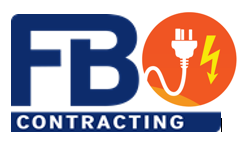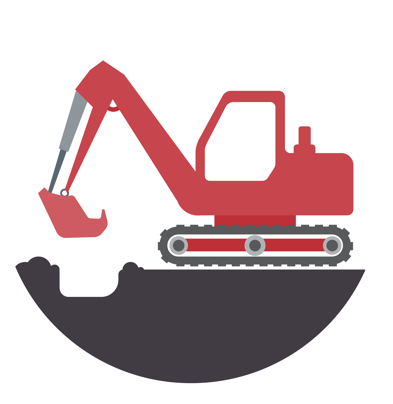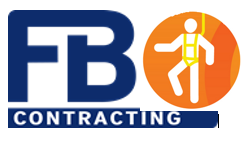Title Page
-
Site conducted
-
Contractor / Seqwater Department
-
Location
-
Conducted on
-
Prepared by
-
Personnel
TRAINING AND COMPETENCY Preventative Control: Only suitably qualified and competent personnel may undertake electrical work at Seqwater sites. * Refer PRO - 00006 - WHS Electrical Safety Procedure Appendix A for electrical apprentice supervision requirements
-
Tick "Yes" if applicable
-
Do all workers conducting electrical activities hold the relevant licenses / competencies? <br>*Take photo of electrical license for evidence
-
Click on link to check relevant electrical competency database
https://fswqap.worksafe.qld.gov.au/elis/searchPrepare.do?dispatch=prepare -
If isolations have been made: Have isolations been performed or approved by Seqwater authorized isolators (This does not apply for simple isolations)
-
Click on link to check authorised isolator database
http://www.seqwater.com.au/about/safety
SUITABLE ELECTRICAL EQUIPMENT Preventative Control: All electrical equipment, systems, tools and PPE must be fit for purpose and compliant with appropriate standards and align with Seqwater procedures
-
<br><br>Tick "Yes" if applicable
-
All electrical tools, PPE and test equipment being used are within test date and have been inspected prior to use?<br>* Electrical test equipment must be of CAT 3 or greater <br><br>
-
All portable electrical equipment is plugged into a portable RCD?
-
All faulty and/or out of date electrical equipment is tagged out of service?
-
Insulating gloves and mats are available and within current test date?
ISOLATIONS Preventative Control: De-energize, isolate and test for dead prior to any work on electrically powered items
-
<br>Tick "Yes" if applicable
-
Have isolations been performed or approved by Seqwater authorized isolators (This does not apply for simple isolations)
-
All Power sources such as uninterruptable power supplies (UPS), batteries, capacitors, solar power and generators have been identified, de-energised and securely isolated at the energy source before works commenced.
-
Prior to any work commencing electrical power has been tested with a known working and calibrated meter and proven as de-energised - (Testing equipment must be Cat 3 or greater)
-
Documented isolation procedures are in place prior to commencement of any electrical work requiring isolations? (TEM 00077)
FAULT FINDING (Low Voltage) Preventative Control: When investigating any LV electrical equipment to identify and rectify faults, all items must be treated as live until proven as de-energised. If any energised fault finding is required all permits and authorisations must be in place.
-
<br><br>Tick "Yes" if applicable<br> <br><br>
-
Prior to any LV fault finding work commencing all elements of the circuit have been be de-energised, isolated and tested for dead?
-
Initial testing for the fault was conducted whilst source of supply was isolated?
-
Has an Energised work permit been completed for any live fault finding activities?
-
If live testing is required, fault finding live work procedures are being followed including the use of insulating tools, gloves and insulating mats. Note - If the risk assessment determines the risk is medium or greater then a qualified electrical spotter trained in cardio pulmonary resuscitation (CPR) and LV rescue is in place?
OVERHEAD CONDUCTORS Preventative Control: Prior to work commencing identify all overhead power sources. Prevent inadvertent overhead services contact by equipment or operational activity by maintaining required exclusion zones.
-
<br><br>Tick "Yes" if applicable
-
Use of one of the following control options are in place - 1. Power distribution isolated or redirected (e.g. underground) 2. Power on in conjunction with controlled movement or operations <br>
-
Minimum clearance distances for overhead cables must be in place to prevent plant encroaching on overhead exclusion zones or coming into contact with overhead power lines - ( 0 -11KVa = 3 Metre Exclusion Zone) (11KVa - 33KVA - 6 Metre Exclusion Zone)
-
Suitably trained spotter with clear communication to personnel working in and around overhead power line exclusion zone is in place?
UNDERGROUND SERVICES Preventative Control: Prior to ground disturbance, underground electrical services must be positively identified with work planned accordingly.
-
<br><br>Tick "Yes" if applicable
-
All electrical services have been positively identified and the exact location of the electrical services, including the depth of the services is known to all working in the vicinity?
-
Provision for isolation of underground services had been considered prior to works commencing?
-
Non destructive digging methods are used while in the vicinity of underground electrical services as per excavation procedure (PRO – 00302) – This includes any of the following - Vacuum excavation, potholing, hand digging, insulated prodder, cable locator, ground radar.
WALL PENETRATIONS Preventative Control: Prior to penetrating walls all electrical services must be positively identified with work planned accordingly, the following must be considered:
-
<br><br>Tick "Yes" if applicable
-
Services have been identified and positively located, including the depth and positioning?
-
If the location of the services cannot be determined the power has been isolated?
EMERGENCY RESPONSE Mitigating Control: Appropriate first aid and rescue equipment must be available and in the direct vicinity of the work area.
-
<br><br>Tick "Yes" if applicable
-
Non-conductive rescue equipment is on location to allow separation of a person safely from an electrical supply and is in test date ( 6 Monthly)? Resuscitation and treatment of burns equipment is available? (All located in LV rescue kit)
-
Workers involved are current first aid trained with LV rescue?
-
Click on link to find list of trained staff -
http://www.seqwater.com.au/about/safety
















